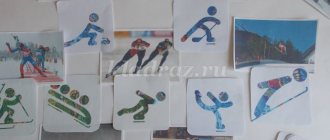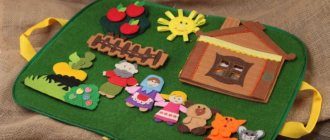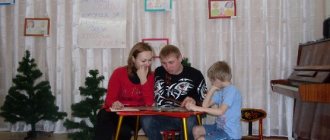What is this
Volkova G.A., Shashkina G.R., Ekaterina Zheleznova studied the positive impact of rhythmic movements on speech together with the pronunciation of words and correct breathing in Russia. From their point of view, logorhythmics is a complex system of motor exercises aimed at eliminating speech anomalies in preschoolers and developing motor skills.
V.A. Gilyarovsky and N.A. Vlasova defined what logorhythmics is differently. In the mid-20th century, they studied the causes and methods of correcting logoneuroses. The main attention was paid to the word as a way to solve speech disorders. Rhythm and movement were given a secondary role. But they noted the usefulness of speech therapy rhythms for intellectual and aesthetic development.
In other words, logorhythmics is an activity that includes marching to rhythmic music, walking to a count, and running. Simultaneously with physical activity, the task is to control breathing, pronounce phrases, sing in a certain intonation, loudly or quietly, etc. Classes are held in an entertaining format, in a group or individually.
Types of tasks in logorhythmics
Logorhythmics exercises include various movements, words, songs, and sounds. Combining this results in useful, interesting tasks. Classic types of speech therapy rhythm classes consist of walking, marching, breathing, and dancing exercises.
Walking is a mandatory exercise in every lesson. Rhythmic movements with the pronunciation of words help cope with speech development anomalies in preschoolers. The teacher needs to regularly complicate it: children must learn to march in a circle, in pairs, in threes, and learn a counter step. Walking teaches kids to navigate in space and develops correct posture. Performed to musical accompaniment.
Exercises to strengthen muscle tone help preschoolers cope with their movements and teach them to control muscle tone.
Logorhythmic exercises for the breathing apparatus also strengthen the cardiovascular system. Completing these tasks helps strengthen diaphragmatic breathing and trains the duration of inhalation and exhalation.
Voice development tasks involve pronouncing vowels and consonants while exhaling. Thus, children develop the strength and expressiveness of their voice.
Dance elements in the tasks allow you to develop motor skills and feel the beats. The movements are selected from classical and folk dance, where the baby’s arms and legs can be used.
A variety of speech tasks can be accompanied by music, then the baby must learn to pronounce lines in accordance with the musical beat. This trains memory well and develops expressiveness of speech.
Puzzles
Riddles are motivating when working with little ones, as they allow them to be as interested as possible and motivated to complete the task. It is better to choose riddles with a saying. So, based on the content and rhyme, the baby immediately understands what is being said.
Poems
Using poems, you can create a task with the addition of dance elements. During the performance, children pronounce what they show with their movements. After this, you can talk with the children about the content of the poem. This also includes logarithmic songs.
Short stories
By playing out small stories (fairy tales), children get ready to perform logorhythmic exercises.
Group of visual techniques
The teacher should prepare in advance for conducting classes, select pictures, videos with exercises, as well as toys, on behalf of which the procedure for completing tasks will be explained.
Practical techniques
Similar techniques are used to summarize the results of speech therapy classes. Such techniques include drawings, crafts, and projects. Projects can be completed at home, together with parents of preschoolers.
Gaming techniques
Almost all tasks in logorhythmics are based on the game. Where complex interaction is not provided, you can use games for the little ones that will help them get ready for work.
How to personalize tasks
In order for a preschooler to accurately remember material based on speech therapy rhythms, he must hear, see, and move during classes. By combining several techniques you can get attention from the most restless children.
Goals and objectives
The main goal of speech therapy rhythm for preschoolers is the correction and prevention of speech disorders by improving motor skills. Logorhythmics also has other related goals - health improvement, physical and spiritual education.
A lesson with elements of logorhythmics poses the following tasks for the teacher:
- Breathing development
- Correction of speech disorders
- Training in control of movements, speech, functioning of the organs of articulation and breathing
- Improving coordination
- Development of all types of memory, attention, spatial orientation
- Cultivating a sense of rhythm
- Reinforcing spatial concepts
- Introduction to spiritual values (music)
- Learning to sing and pronounce tongue twisters
- Expanding your horizons
- Increasing vocabulary
What kids can't do without logorhythmics?
Speech is a rather complex process. It involves different mechanisms: breathing, the work of the oral cavity, and the nervous system. The failure of one component causes problems in the entire speech process.
Logorhythmics classes are most needed for children with complex speech disorders. For example, children with a history of aphasia. Aphasia is a violation of already formed speech. With this disease, the perception of speech itself is also impaired. The task of the teacher in this case is to teach the preschooler to recognize speech addressed to him and to respond to it.
Classes are important for children with speech underdevelopment (OND and FFND), in which phonetics and the semantic side of speech suffer. Children with this disease get tired quickly and have difficulty learning material. With the help of logorhythmics, teachers help children overcome psychological barriers and adapt socially.
Speech therapy rhythms have a positive effect on children with stuttering and dysarthria - exercises, including breathing ones, create the necessary psychological mood and motivation.
Complexes for children 2-3 years old
Logorhythmics for kids involves the creation of special sets of exercises and entertaining activities. Games and exercises are performed using the method of imitation.
Animals
- Helps to get acquainted with the world of animals, insects, birds. Classes involve reading poetry, imitating walking movements, and animal sounds.
- Kids can walk like a bear, flap their wings like a swan, a sparrow, walk like a duck, etc.
- Onomatopoeia is required. The teacher asks: “How does a goose scream when it flies?” Pupils should wave their arms and answer: “HA-HA!”
- Pictures of animals and birds are used to help the speech therapist, teacher and parents.
- You can use the story with the bear and the cone:
The clumsy bear walks through the forest, collects cones and puts them in his pocket...
Children walk with their teacher, roar like a bear, and collect pine cones.
Vegetables and fruits
- They expand their knowledge of the world around them, the colors of fruits, and introduce them to their names.
- The following exercises are used for the lesson:
Salt the cabbage. The poem is read:
We cut the cabbage, cut it, We chop the cabbage, chop it...
Children make movements with their hands, pretending to be a knife or a hatchet.
We salt the cabbage, salt it, We press the cabbage, press it.
And we'll grate the carrots.
They depict how they stir, salt, and squeeze chopped vegetables.
- Let's go to the garden
Pictures depicting garden vegetables and garden fruits are used. First, you should have a conversation, tell preschoolers about where vegetables and fruits grow, what color they are, how they smell, etc.
Then a scene of a trip to the garden to collect the harvest is depicted. You can use fruit toys that the children will pick from trees and collect from beds. A competition game is suitable: children are divided into 2 teams, toy fruits are laid out around the room. The teacher asks each team to find as many fruits from one group as possible: for example, vegetables. Children take turns looking for them and bringing them to their basket.
Logorhythmics lesson in the middle group of preschool educational institutions
“The cockerel is sick” Logorhythmics lesson for the middle group Tools: Toy - Cockerel, goose, horse, chicken, sticks, hat - Dog, housewife’s handkerchief. Progress of the lesson: We’ll go, let’s go, let’s go, We’ll get into a fairy tale with you. Greet guests. The guests came to us with rhythm, they also want to get into a fairy tale.
The legs walked into a fairy tale along the path... 1. Listening to the voice of the rooster. Who shouted that? He raised the sun. 2. Finger game “Sunshine, sunshine” Sunshine, sunshine, palms together, fingers open, movements on the wrists Look out the window... “window with fingers”
Everyone woke up, Stretched 3. Game poem “Stretchers” Stretches, stretched, arms to the sides Stretches, stretched, arms up And in the hands there are grasping movements, grasping movements And in the legs there are trampling movements. tops And in the mouth - talk, work with the tongue “lick” And in the head - mind. pat themselves on the head
Everyone woke up, stretched... The cockerel began to walk, raising his legs. 4. Musical sketch “Ku-ka-re-ku!” (walking with a high lift of the hip, at the end of the phrase balance on one leg, slaps on the sides “Ku-ka-re-ku!”) 5. Finger play and round dance “The sun has a friend” The sun has a friend - hands up Loud cockerel . comb from the fingers on the head It’s good when, my friend, clap the Voiced Cockerel. scallop and b. p. It’s good when friends join hands and dance in a circle. It’s us, you and me! It’s good when friends stop and shake their clasped hands. It’s us, you and me!
Every morning the cockerel sang his song. But one day the cockerel caught a cold. The rooster fell ill with a sore throat. He won’t sing for the second night. How can we help Petenka? If the cockerel is sick, who will crow in the morning? Maybe a goose? 6. Game of hands “Geese” Ha-ha-ha, ha-ha-ha, We are going for a walk in the meadows!
“Goose” The goose is noisy, walking in a full squat with a long nose. The neck is like a question mark. stretch the neck 6. Imitation of the “Squatting” movement
The goose goes for a walk in the meadows and cackles: Ha-ha-ga.
They went for a walk in the forest. And the hostess began to look for them. 8. Outdoor game “Geese” children sit “hidden” - covering their eyes with their palms Ved. - the hostess in a headscarf - Geese, geese - Ha, ha, ha. Do you want to eat? - Yes Yes Yes. So fly to me! There is food waiting for you in the yard! children-geese fly “to the hostess” (spatial orientation) “The hostess imitates that she is pouring grains for them, the “geese” squat, “peck”, the hostess moves to another place, collect all the grains, and then run to me. the game continues again.
A goose can't crow, maybe a duck can?
The ducks came out into the meadows, walking in a half-squat. Quack-quack-quack! We can't live without Petya, quack-quack-quack!
9. “Ducks” movements (knees together, legs apart) Ducks cannot scream “Cuckoo-ka-re-coo”, No one can replace the rooster, Cue-ka-re-coo scream in the morning. The goose can’t, the duck can’t either, but the dog Barbos wanted to - he overslept. 11. Game with a dog “We are walking quietly...” (children quietly approach the dog with the words: We are walking quietly, And we will come up to the dog. And we will clap our hands... once! (at the same time they clap our hands) The dog will catch up with us! (the dog barks, catches up with the children, they run away to the chairs)
The dog just barks, he doesn’t want to shout ka-ka-re-ku!
Here is a horse running, Maybe it can treat Petya? Music "Horse" movements. (straight gallop)
Games poem. Clack, click, I am a horse with a gray side. I knock with my hooves, I invite you to knock.
Let's take the sticks and start knocking with them. Games with sticks. Ree is loud and quiet. "I jumped, I ran"
A horse cannot scream cuckoo, it can only sing its own song... Which one? e-go-go...
What should we do, what should we do, how should we treat Petya? They called Petya into the room. They put his hands under his cheeks on the bed. They took him out to gargle. Chickens came to Petya and brought milk: “What is the temperature? Drink milk, Petya!”
Petya began to drink milk, he knows that it is healthy.
12. Speech therapy exercise “The cockerel is drinking” (Stretch out the lips (drinks), then “ah-ah-ah” - while exhaling, or throwing his head back “gargles”) The cockerel drank milk He began to get better Walked with the chickens 13. Dance etude “ Chickens' Movements: walking, pecking, circling
14. Play poem “Cockerel, cockerel - golden comb” Petya, Petya, Cockerel, golden comb, Petya gets up early, sings loudly... Ku-ka-re-ku!
The cockerel sang songs again and accompanied us to the group. Exit “The legs walked in a group along the path”
Complex for children 3-4 years old
Logorhythmics in kindergarten for children over 3 years old may include the following complexes:
- Finger gymnastics
You need to stretch the fingers of both hands, make locks, depict boats, household items, etc. At the same time, poems are recited on various topics:
- Who sings what?
The cat sings a song: Meow! Meow! (children petting an imaginary cat).
The clock sings: Tick! So! (the handles represent ticking arrows).
Piglet grunts: Oink! Oink! (fingers make a patch - a circle).
The cabin in the river does not sing: Mmmmm! Mmmm! (press their lips, cover their mouth with their hands), etc.
- Mushrooms
Children stand in a row and walk through the forest to look for mushrooms. Massage your fingers without ceasing to walk. The teacher counts, creating a rhythm.
Top-top - five steps (children step to the rhythm of the poem), And in the basket there are five mushrooms (we count the fingers on the hands), Amanita is red (we stretch the index finger), It is very dangerous. And the second is a fox (we touch the next finger), a red pigtail. Pink ear (touch the ears) The third mushroom is the trumpet mushroom. And the fourth mushroom is the morel (tugging at the ring finger), a bearded old man. Well, what is the fifth mushroom? White! (put your hands in a lock and play with your fingers).
- Singing
Music lessons are used. Children learn breathing exercises. It is not necessary to sing songs; you can hum individual sounds, imitate animals, while doing physical exercises at the same time.
- Outdoor games to music
Logorhythmic exercises are performed with musical accompaniment. Words and movements are learned, attention and memory develop. You can use balls, passing them around to each other in a circle, chairs, toys to hide and quickly find, etc. Logorhythmics tasks for children 3-4 years old can be slightly complicated and used for games with the older, preparatory group.
Preparatory group. Senior preschool age. Children 6-7 years old
Summary of a music lesson in a preparatory group using logori Goal: prevention, overcoming and development of speech abilities and the capabilities of the musculoskeletal system through the development of the motor sphere in harmonious unity with word, imagination and music. Objectives: - develop motor skills, rhythmic abilities, abilities...
Logorhythmic lesson “What do you have?” for children 6–7 years old Goal: overcoming speech disorders in children through the development and correction of the motor sphere in combination with words, music and movement as part of early career guidance. Objectives: - Systematize children’s knowledge about professions; -Consolidate the acquired knowledge on the material of the poem S....
Complex for children 5-6 years old
- Movement exercises It is better if the children themselves come up with movements to the poem that the teacher reads:
We will go to the forest today (children are walking), Who climbed the tree? (raise their heads up) Cuckoo? Cuckoo? (put hands to lips, repeat words) I’ll find you anyway
- Physical warm-up
Physical education to music. The poetic form of commands is used. Children gradually learn it by heart and pronounce it themselves.
The mouse ran quickly (we move one after another, slowly), The mouse wagged its tail (we repeat the movements of the animal), And dropped the egg (tilt down - lift up), Look, oh, it broke (we shake our heads, put our palms to our cheeks).
Logorhythmics in preschool educational institutions is used in any lesson: physical education, speech therapy, music. Teachers should pay attention to the pronunciation of auxiliary poems and words by children, and to the correct breathing of children during exercise.
Recommendations for conducting classes
- Shape the lesson load according to the age and development level of preschoolers
- Give a lesson in the afternoon
- Change the topic of the lesson every week
- When selecting material, rely on lexical topics
- Use fairy tales and cartoons for speech and music exercises
- Exercise every day
- Accurately and clearly demonstrate to children the movements of their hands, body, and lips during phonation. Monitor the quality of assignments.
To solve your children’s speech problems, you don’t have to wait for help from a preschool education institution; work with your child at home. The logorhythmics technique is easy for any parent to learn.


